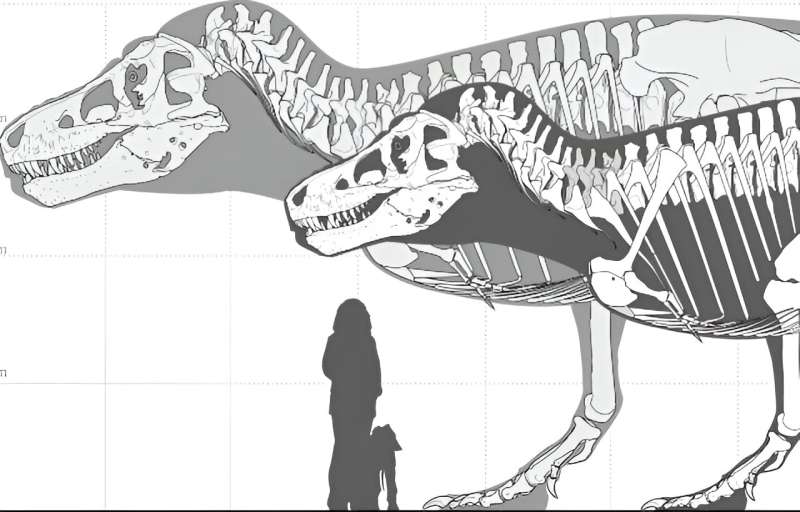This article has been reviewed according to Science X's editorial process and policies. Editors have highlighted the following attributes while ensuring the content's credibility:
fact-checked
peer-reviewed publication
trusted source
proofread
Scientists assess how large dinosaurs could really get

A new study by Dr. Jordan Mallon of the Canadian Museum of Nature in Ottawa, Canada and Dr. David Hone of Queen Mary University of London, U.K., looks at the maximum possible sizes of dinosaurs. It is published in the journal Ecology and Evolution.
The huge sizes attained by many dinosaurs make them a source of endless fascination—how did animals evolve to be so big? There are perennial claims and counter-claims about which dinosaur species was the largest of its group or even the largest ever.
But most dinosaur species are known from only one or a handful of specimens, so it's extraordinarily unlikely that they will include the largest individuals that ever existed. The question remains: how big were the largest individuals, and are we likely to find them?
Mallon and Hone computationally modeled a population of Tyrannosaurus rex. They factored in variables like population size, growth rate, lifespan, preservation biases in the fossil record, and more. Body size variance at adulthood, which is still poorly known in T. rex, was modeled with and without sex differences, based on living alligators. Tyrannosaurus rex was chosen as a model because it is a well-studied dinosaur with much of this information known or with good estimates.
The paleontologists found that the largest existing T. rex fossils probably fall in the 99th percentile (i.e., the top 1% of body size), but that to find an animal in the top 99.99% (a 1-in-10,000 individual), we would need to excavate fossils at the current rate for another 1,000 years. The largest ever individual (1 in 2.5 billion animals) may have been 70% more massive than the current largest-known T. rex specimens (an estimated 15 metric tons vs. 8.8 metric tons) and 25% longer (15 m vs. 12 m).
The values are estimates based on the model, but patterns of discovery of giants of modern species tell us there must have been larger dinosaurs out there that we have not yet found. Some isolated bones and pieces certainly hint at still larger specimens than we currently have skeletons for. This greatly impinges on the debates about the largest fossil animals.
Many of the largest dinosaurs in various groups are known from a single good specimen, so it's impossible to know if this one animal was a big or small example of the species. An apparently large species might be known from a giant individual and an apparently smaller species known from only a small animal and the typical or maximum sizes were very different.
The chances that we will find the largest ever individuals are incredibly small. So, despite the giant skeletons that can be seen in museums around the world, the very largest individuals were even larger.
Dr. Mallon said, "Our study suggests that, for big fossil animals like T. rex, we really have no idea from the fossil record about the absolute sizes they might have reached. It's fun to think about a 15 metric ton T. rex, but the implications are also interesting from a biomechanical or ecological perspective."
Dr. Hone said, "It's important to stress that this isn't really about T. rex, it's the basis of our study, but this issue would apply to all dinosaurs (and lots of other fossil species). Arguing about 'which is the biggest?' based on a handful of skeletons really isn't very meaningful."
More information: Jordan C. Mallon et al, Estimation of maximum body size in fossil species: A case study using Tyrannosaurus rex, Ecology and Evolution (2024). DOI: 10.1002/ece3.11658
Journal information: Ecology and Evolution
Provided by Queen Mary, University of London




















